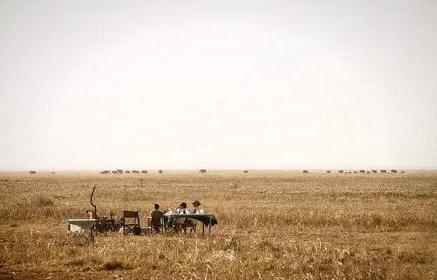Introduction:
Exploring the Serengeti , Nestled in the heart of East Africa, the Serengeti National Park in Tanzania stands as an iconic testament to the beauty and diversity of the natural world. One of the most awe-inspiring spectacles that this vast expanse of wilderness offers is the Great Migration, a phenomenon that draws wildlife enthusiasts, photographers, and adventurers from around the globe. In this exploration, we embark on a journey to unravel the mysteries of the Serengeti and witness firsthand the breathtaking spectacle of the Great Migration.
The Serengeti Ecosystem
Before delving into the intricacies of the Great Migration, it’s essential to understand the Serengeti’s unique ecosystem. Covering an expansive 30,000 square kilometers, the park is characterized by a diverse landscape that includes vast grasslands, acacia-studded plains, and dense woodlands. The Serengeti is renowned for its rich biodiversity, housing a multitude of species from the Big Five—lion, leopard, elephant, buffalo, and rhinoceros—to an array of gazelles, zebras, and wildebeests.
The Great Migration Unveiled
The Great Migration, often hailed as one of the Seven Natural Wonders of Africa, is a cyclical journey undertaken by over two million wildebeests, zebras, and gazelles. The migration follows a circular route that spans the Serengeti in Tanzania and the Maasai Mara in Kenya, covering approximately 1,800 miles. This incredible journey is driven by the animals’ instinct to seek greener pastures and fresh water sources.
The Annual Cycle of the Migration
The Great Migration is a year-round spectacle, with each season bringing its own set of experiences. The cycle begins in the Southern Serengeti, where the wildebeest give birth to their calves between January and March. This period, known as the calving season, attracts predators such as lions and hyenas, creating a riveting drama of life and death on the plains.
The Grind of the Long Trek
As the dry season approaches in late May, the wildebeests, zebras, and gazelles start their arduous trek towards the Western Corridor. The migration is a sight to behold as the colossal herds traverse rivers, navigate challenging terrain, and face the constant threat of predators. This phase of the journey, marked by river crossings, is particularly dramatic and a highlight for many safari-goers.
The Drama of River Crossings
One of the most captivating and perilous moments during the Great Migration is the river crossing, notably at the Grumeti and Mara Rivers. These crossings are rife with danger as the wildebeests and zebras face not only the treacherous currents but also the lurking presence of crocodiles. The air is charged with anticipation as the herds gather, and the tension builds before they plunge into the water, creating a frenzied spectacle of survival.
The Abundance of the Serengeti’s Wildlife
While the Great Migration takes center stage, the Serengeti is a year-round haven for wildlife enthusiasts. The park boasts an impressive population of predators, and lucky visitors may witness the elusive leopard lounging in the branches or a pride of lions on the prowl. Additionally, the Serengeti is a birdwatcher’s paradise, with over 500 bird species gracing its skies.
Safari Experiences in the Serengeti
To truly appreciate the grandeur of the Serengeti and the Great Migration, embarking on a safari is a must. The park offers various types of safaris, from traditional game drives to hot air balloon excursions that provide a unique perspective of the vast landscapes and the migrating herds. Camping within the park also offers an immersive experience, allowing visitors to be enveloped by the sounds of the wild as they sleep under the African stars.
Conservation Efforts in the Serengeti
Preserving the delicate balance of the Serengeti ecosystem is crucial for ensuring the longevity of the Great Migration and the myriad species that call this region home. Conservation initiatives, both governmental and non-governmental, are actively working to combat poaching, habitat loss, and other threats to the park’s biodiversity. Visitors can contribute to these efforts by supporting ethical tourism practices and responsible wildlife viewing.
Conclusion: A Timeless Symphony of Nature Exploring the Serengeti
In conclusion, exploring the Serengeti and witnessing the Great Migration is an unforgettable journey into the heart of Africa’s untamed beauty. The park’s diverse landscapes, teeming wildlife, and the dramatic spectacle of the migration paint a vivid picture of the natural world’s intricate interconnectedness. As we marvel at the timeless symphony of nature in the Serengeti, we are reminded of the importance of conservation and our responsibility to protect and preserve these extraordinary wonders for generations to come.

